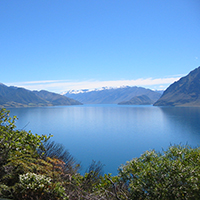The use of the term ‘limnology’ and its scientometrics consequences for limnologists

Submitted: 10 June 2021
Accepted: 27 July 2021
Published: 30 July 2021
Accepted: 27 July 2021
Abstract Views: 1023
PDF: 237
Dataset: 0
Supplementary Table 1: 270
Supplementary Table 2: 85
HTML: 42
Dataset: 0
Supplementary Table 1: 270
Supplementary Table 2: 85
HTML: 42
Publisher's note
All claims expressed in this article are solely those of the authors and do not necessarily represent those of their affiliated organizations, or those of the publisher, the editors and the reviewers. Any product that may be evaluated in this article or claim that may be made by its manufacturer is not guaranteed or endorsed by the publisher.
All claims expressed in this article are solely those of the authors and do not necessarily represent those of their affiliated organizations, or those of the publisher, the editors and the reviewers. Any product that may be evaluated in this article or claim that may be made by its manufacturer is not guaranteed or endorsed by the publisher.
Similar Articles
- The MOLAR Water Chemistry Group, The MOLAR Project: atmospheric deposition and lake water chemistry , Journal of Limnology: Vol. 58 No. 2 (1999)
- Gabriella SCHÖLL-BARNA, An isotope mass balance model for the correlation of freshwater bivalve shell (Unio pictorum) carbonate δ18O to climatic conditions and water δ18O in Lake Balaton (Hungary) , Journal of Limnology: Vol. 70 No. 2 (2011)
- Mindaugas Zilius, Darius Daunys, Jolita Petkuviene, Marco Bartoli, Sediment-water oxygen, ammonium and soluble reactive phosphorus fluxes in a turbid freshwater estuary (Curonian lagoon, Lithuania): evidences of benthic microalgal activity , Journal of Limnology: Vol. 71 No. 2 (2012)
- Yury KAMENIR, Giuseppe MORABITO, Lago Maggiore oligotrophication as seen from the long-term evolution of its phytoplankton taxonomic size structure , Journal of Limnology: Vol. 68 No. 1 (2009)
- Roberto M. CENCI, The use of aquatic moss (Fontinalis antipyretica) as monitor of contamination in standing and running waters: limits and advantages , Journal of Limnology: Vol. 60 No. s1 (2001): Scientific and legal aspects of biological monitoring in freshwater
- Sean Murray Marr, Anthony Michael Swemmer, Hydrological characteristics of extreme floods in the Klaserie River, a headwater stream in southern Africa , Journal of Limnology: Vol. 82 (2023)
- Nirmal J.I. KUMAR, Hiren SONI, Rita N. KUMAR, Biomonitoring of selected freshwater macrophytes to assess lake trace element contamination: a case study of Nal Sarovar Bird Sanctuary, Gujarat, India , Journal of Limnology: Vol. 65 No. 1 (2006)
- Mauro TONOLLA, Sandro PEDUZZI, Antonella DEMARTA, Raffaele PEDUZZI, Dittmar HAHN, Phototropic sulfur and sulfate-reducing bacteria in the chemocline of meromictic Lake Cadagno, Switzerland , Journal of Limnology: Vol. 63 No. 2 (2004)
- Jaromir Seda, Adam Petrusek, Daphnia as a model organism in limnology and aquatic biology: some aspects of its reproduction and development , Journal of Limnology: Vol. 70 No. 2 (2011)
- André F. LOTTER, Wolfgang HOFMANN, Christian KAMENIK, Andrea LAMI, Christian OHLENDORF, Michael STURM, Willem O. VAN DER KNAAP, Jacqueline F.N. VAN LEEUWEN, Sedimentological and biostratigraphical analyses of short sediment cores from Hagelseewli (2339 m a.s.l.) in the Swiss Alps , Journal of Limnology: Vol. 59 No. s1 (2000): Climatic variability and ecosystem dynamics at remote mountain lakes
<< < 61 62 63 64 65 66 67 68 69 70 > >>
You may also start an advanced similarity search for this article.

 https://doi.org/10.4081/jlimnol.2021.2042
https://doi.org/10.4081/jlimnol.2021.2042






